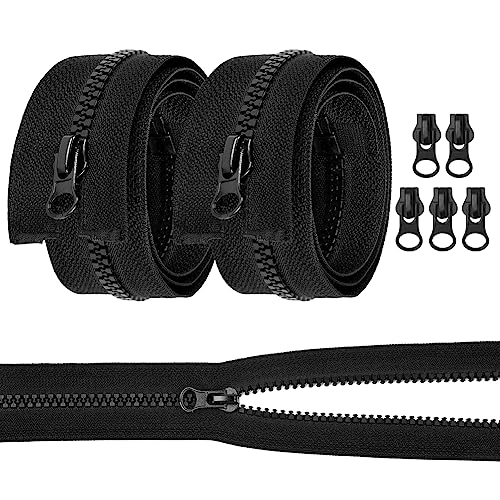The Pros and Cons of Different Zipper Materials
When it comes to choosing a zipper for your clothing or accessories, the material used can make a big difference in terms of functionality and longevity. There are several different zipper materials available, each with its own unique set of pros and cons. In this article, we will explore the advantages and disadvantages of the most commonly used zipper materials.
Metal Zippers
Metal zippers are one of the most durable options available, making them ideal for heavy-duty applications such as jackets and jeans. They are typically made from zinc alloy or brass, which gives them strength and stability. Metal zippers also have a classic and stylish look that is often preferred for high-end garments.
One of the main advantages of metal zippers is their durability. They are less likely to break or get stuck compared to other materials. Metal zippers can also withstand high temperatures, making them a good choice for garments that may be exposed to heat or flame. However, metal zippers can be heavier and bulkier than other options, which may not be suitable for lightweight garments or accessories.
Plastic Zippers
Plastic zippers, also known as coil zippers, are lightweight and flexible, making them suitable for a wide range of applications. They are made from polyester or nylon coils that interlock when the zipper is closed. Plastic zippers are commonly used in everyday clothing, bags, and home textiles.
One of the main advantages of plastic zippers is their versatility. They come in a variety of colors and styles, making them easy to integrate into different designs. Plastic zippers are also resistant to corrosion, which is particularly beneficial for garments that may be exposed to moisture or chemicals. However, plastic zippers are less durable than metal zippers and can break or get stuck more easily.
Invisible Zippers
Invisible zippers, also known as concealed zippers, are designed to be hidden within the fabric when closed. They are often used in dresses, skirts, and formalwear where aesthetics are a priority. Invisible zippers are typically made from plastic or coil materials.
One of the main advantages of invisible zippers is their seamless and discreet appearance. When closed, they are virtually invisible and do not disrupt the overall look of the garment. Invisible zippers are also relatively easy to sew in, making them a popular choice for home sewers. However, invisible zippers can be more challenging to repair or replace if they get damaged.
Nylon Zippers
Nylon zippers are another popular option, known for their strength and versatility. They are made from woven nylon tape and interlocking plastic or metal teeth. Nylon zippers are commonly used in luggage, backpacks, and outdoor gear.
One of the main advantages of nylon zippers is their strength and durability. They can withstand heavy use and are resistant to abrasion and moisture. Nylon zippers are also lightweight and flexible, making them suitable for a wide range of applications. However, nylon zippers can be less smooth to open and close compared to other materials.
When choosing a zipper material, it is important to consider the specific requirements of your garment or accessory. Metal zippers are durable and stylish, but may not be suitable for lightweight items. Plastic zippers are versatile and lightweight, but may not withstand heavy use. Invisible zippers provide a seamless appearance but can be challenging to repair. Nylon zippers are strong and versatile but may be less smooth to use. By weighing the pros and cons of each material, you can make an informed decision for your project.






